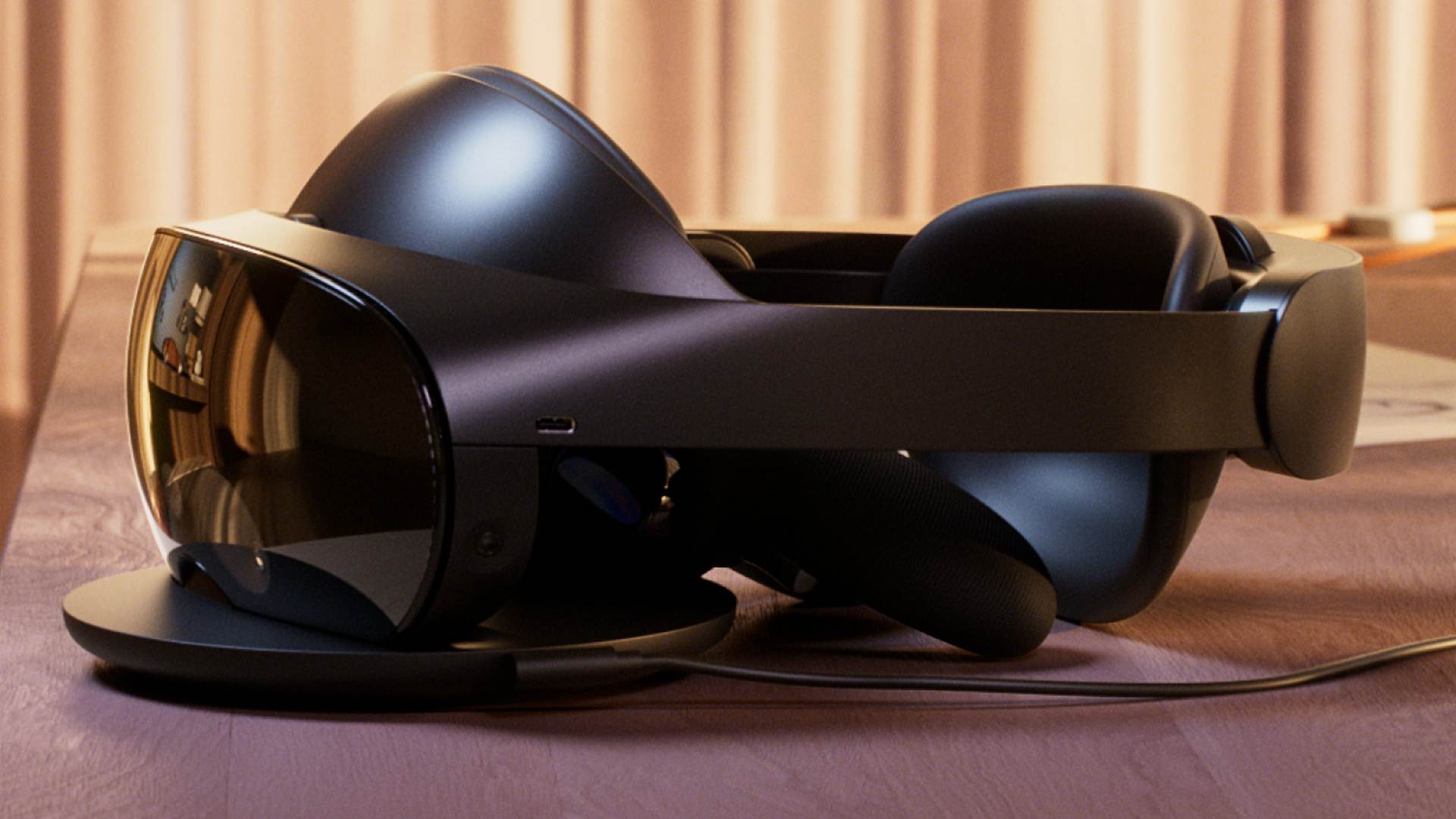
Photo by Mika Baumeister on Unsplash
Everything There Is To Know About Augmented Reality
How AR is Changing the Way We See the World
The TechSavvy will receive a commission if you purchase anything through the links on this page. So, please! do so to support us.
Get your tech items, back-to-school essentials, house furniture, computer, and car replacement parts at the lowest prices here.
Apple recently released its new Mixed Reality headset called the Vision Pro. And because it's Apple, It has generated a lot of excitement among tech enthusiasts, but most importantly, it has raised awareness about the second aspect of Mixed Reality which is Augmented Reality(the first one is Virtual Reality by the way). Although it has been around for quite some time now, very few people actually know what it is and that's what we will try and understand in this article.
What is Augmented Reality?
Augmented Reality is the Integration of digital Information like Visual elements, sound, or other sensory information in the User's environment. Unlike Virtual Reality which creates an entirely digital environment in which the user immerses, Augmented Reality integrates digital elements into the Real world.
A great example of these is Snapchat filters. Snapchat uses AR software to generate digital elements that are then placed on your face in real time.
Brief History of AR
Though AR sounds like a completely new concept, it has actually been around for quite some time. The first attempts at producing functioning AR technology date back to the late 1960s when Harvard Professor Ivan Sutherland in his experimental studies developed a head-mounted Headset called the "Sword of Damocles". It was named like this because of the large overhead beam required to support its weight.
The term AR was coined by a Boeing Researcher called Tom Caudell. It was the name he gave to the concept idea of the machine he was asked to develop. He was tasked with the creation of a head-mounted device that would be worn by workers to guide them In the assembling of electrical wires.
The first integration of AR into gaming was done by the AR Quark. This was a huge innovation back then that showcased the enormous potential Augmented Reality has. The only downside was, players had to wear a big and heavy backpack with a computer inside to be able to play the game.
But the technology kept improving, and with enormous investments from the largest companies into research and development, AR devices have considerably reduced in size and some of them can even fit inside your back pocket.
Biggest Companies/Products in the AR Sector
1.MICROSOFT (Hololens):
The Microsoft Hololens was Microsoft's attempt at breaking into the AR space. It is a really great product with a lot of advanced features. It uses a plethora of optical sensors on each side to capture the environment so it knows where to place the digital object. A main downward-facing camera for the capture of hand gestures. Several Microphones and an HD display. All this data is processed by the Microsoft's own chip called the Holographic Processing Unit which they claim has more power than the average laptop.
2.NReal

NReal is a small company that is slowly making its way to the top and is becoming one of the biggest players in the AR game today notably with their NReal air and NReal light glasses. They too have high-quality technology. Some of the technical specifications include:
- 2 LCD Sony screens on each side produce 2 separate images that the brain will blend to produce a single high-resolution image and the Illusion of a 3D projected image.
- High-quality speakers
- Can go up to 5hrs without needing a recharge.
It actually has a USB Cable that needs to be connected to a phone or a computer before it can work and project a home screen. The cable can also be connected to a gaming console like the Nintendo Switch and be used as a larger display for a more immersive gaming experience. However, expect the image quality to be comparable to what you'll get from a projector.
3.META (Metaquest)

The MetaQuest formerly called the Occulus quest was developed by Meta, (formerly Facebook) as a gateway to the Metaverse but not only. It can also be used for gaming and watching movies. It is one of the most advanced mixed reality headsets out there thanks to its Single high-resolution LCD screen(about 1832x1920 per eye), and its numerous microphones and cameras to track hand gestures and eye movement that all work together to produce a smooth VR/AR experience. Watch out for motion sickness though.
4.APPLE (Apple Vision Pro)
Apple has finally decided to join the Mixed Reality headset game with its Apple Vision Pro and apart from its extraordinary price (3499$), there are a lot of other extraordinary things about this headset as it is one of the best Mixed Reality headsets out there as expected from Apple. It uses some of the most advanced Mixed Reality technology out there. Its technical specs are quite impressive;
-Laminated glass display to reduce the thickness of the screen while keeping the image at a very high quality.
-23 Megapixel micro-OLED screens
-12! Cameras to capture the environment so it can accurately incorporate the digital elements into it.
-6 microphones
-5 Sensors that capture all types of Sensory information.
-etc..
But even though this is advertised as a Mixed Reality headset, it will mostly be suitable for office work, watching movies, and a little bit of gaming. So the AR part is more of a gimmick here than anything else.
5.MAGIC LEAP (Magic Leap 2)
Similar to NReal, Magic Leap is another small company that is also on its way to becoming one of the best AR hardware manufacturers out there. It went through a period of downfall but has recently made a comeback with its Magic Leap 2. This headset is amazing and it has so many features I can't even list them all here so I will an article from AR insider that reviewed them.
7.GOOGLE (Google Glasses)
Google was actually the first major company to try its luck with pure AR glasses with google glasses. They never really took off mostly because of security issues where people were scared of constantly being recorded but most importantly because the world wasn't ready for them yet.
Where is AR used?
Augmented Reality is relatively new but is already being used in quite a lot of areas that include;
Health Care
AR technology has already served in surgical procedures. A technology called XVision was used by surgeons at the John Hopkins medical center to fuse 3 vertebrae. They used it as a head-mounted X-Ray machine to accurately navigate instruments and implants while looking directly at the patient and not at a screen.
Education
There exist a group of students called kinesthetic learners who learn better through a more hands-on experience. AR is a great way to produce a learning experience that is suitable for them. Tools like Merge Cube and CoSpaces Edu are already used in many schools today to create a more engaging learning experience.
Many believe the future of gaming to be found in AR and it is totally understandable. Just imagine being able to shoot virtual soldiers in real life. That would be insane. AR has already made its way into gaming quite a few times. The most notable one being Pokemon Go which took the world by storm at some point and became a cultural phenomenon. Since then, gaming companies have tried to create another Pokemon Go, and hopefully, we see one coming in the next few years.
Industries

AR is already being used by so many manufacturing companies to help in the visualization and more accurate build of their products. It can also be used to provide remote assistance where a technician can be able to guide you more accurately by projecting every element he is talking about into your environment so you see how the different parts assemble.
Where is AR heading?
The AR market is currently valued at approximately 3.5 billion$ and is projected to reach 340 billion$ by 2028. This means AR is a fast-growing area and it will surely become one of the main things companies will focus on in the future.
The opportunities AR will provide will be unlimited and even though many sectors already use it, the technology isn't quite advanced yet and has to be improved for it to become as mainstream as Virtual Reality.
The future of Augmented Reality looks bright and I can't wait to see what is coming next.
If you liked the article, please consider following since it will really help me a lot and I will see you in the next one. Ciao!


